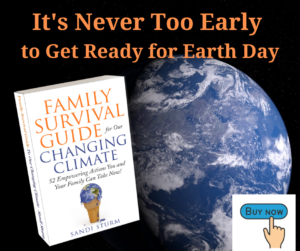Just before the pandemic, I traveled to Minneapolis from Portland, Oregon for another Climate Reality Leadership training. This was my fourth and each time I am amazed at how well they manage to feed 1,000 to 2,000 people without having trash cans overflow.
Every meal is vegetarian with vegan options served on real plates, real utensils and cloth napkins. They compost left over food waste. We are encouraged to bring our own mugs, which for me includes a hot mug for my morning tea, and a cold mug for the rest of the day. I never seem to travel light. But they do have actual coffee mugs and glasses if you forget yours.
They also buy carbon offset credits for our travel. More on that in another article.
It is a perfect example showing that we can reduce our waste and conserve resources at any size meeting. If they can do it for 2,000 people, why do so many offices still have paper plates, plastic utensils, and throw away cups at the water fountain?
In my last article about your Carbon Footprint we discussed the resource story of a book. Energy is consumed at every phase, from resource exploration to resource extraction to manufacturing to transportation. The same is true for everything you use in your meetings.
I have over 550,000 people in my second tier on LinkedIn. I reference that to give a point of reference because I can bet that every single one of them will attend at least one meeting this year, either for work or for their community groups, that still use disposable items. Just imagine the piles in the trash containers for those meetings!
Why the vegetarian and vegan food options? While this is not a popular topic to talk about, it is important because animal agriculture is a big producer of greenhouse gases.
- Animal agriculture is responsible for 18 percent of greenhouse gas emissions, more than the combined exhaust from all transportation.
- Livestock and their byproducts account for at least 32,000 million tons of carbon dioxide (CO2) per year, or 51% of all worldwide greenhouse gas emissions.
Events are another area that has a big impact on our carbon footprint. Do we really need all those disposable items with logos on them? All those printed handouts? People pick them up just to be polite most of the time. But how many trade shows have you attended and came home with a bag full of paper and stuff that ends up in the trash or recycling bin?
We will also explore this further in future articles.
For now I challenge you to make some changes for your next meeting (or prepare when we can meet face to face). Think about what you use. What is in the workplace kitchen? Do you use those disposable coffee and tea pods or K-cups, or do you buy beans in bulk at your local grocer? Do you have paper plates and napkins? Plastic forks? Paper or plastic disposable drink cups?
Fill the cupboards with reusable instead of disposable. Both take valuable resources to create and transport, but reusable only goes through that cycle once. You will also save money and time. Save even more money and resource by getting your reusable dishes and utensils at your local Goodwill or similar store. I was able to get a service for 25 people, including small plates, bowls, and utensils plus I bought some muslin and cut into squares for napkins – for under $100.
Let me know what else you do in the office to reduce waste. And if you just have to have something to give away at your booth, how about a reusable water bottle and a 5 gallon reusable jug of water so they can fill it up? Let’s get creative.









